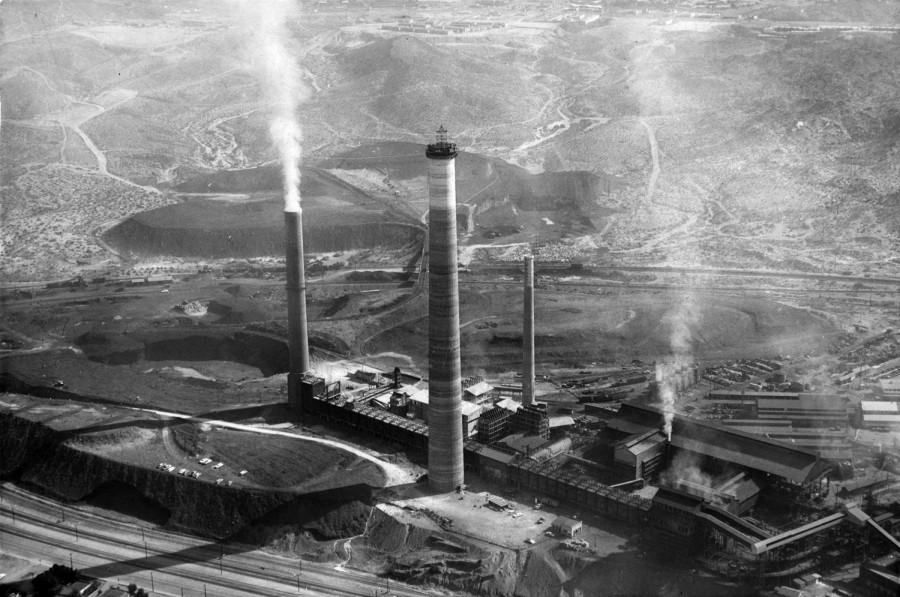It has been three years since the demolition of the iconic ASARCO smokestacks that crumbled to the ground. Since then, the area where the smokestacks once stood is a barren and desolate area, but an exhibit that will be housed at the UTEP Library will bring this piece of the city’s controversial past out of the dusty annals of history and into the present day.
Beginning April 8, “ASARCO in El Paso: A Visual History of Industry on the Border” will be held on the third floor of the library and will display a selection from the immense collection of ASARCO history, which includes 12,000 drawings and plans, 77 ledgers and bound copies of indexes, four framed panoramic photos, 3,000 black-and-white negatives, 250 color slides and over a hundred aerial views and maps.
Although the exhibition will remind the public what El Paso’s skyline looked like with the copper-smelting towers standing long and tall in front of Mount Cristo Rey, the sight is not pleasant for everyone. According to a comment posted by Carlos Rodriguez, an ex-employee of 29 years, on NPR’s “Timeline: History of ASARCO in El Paso,” the smokestacks remind him of the multitude of health codes the company broke.
“My loyalty stopped when I found them to be incinerating illegal for-profit toxic hazardous chemicals,” Rodriguez said. “What they exposed their employees to was not only against (Environmental Protection Agency) regulations but (Occupational Safety and Health Administration) as well. You name it, they broke it.”
ASARCO paid well over a billion dollars in settlements for these offenses. Many might wonder why El Pasoans would want to remember a structure that stands as a symbol of industrial pollution and disregard of public health.
Samantha Jaso comes from a family that lived in “La Esmelda,” which stands for Smeltertown. It was a small community of ASARCO employees just west of downtown. She recalls her grandparents’ sentiments about the towers going down.
“They worked at the plant for a long time, their income came from their hard work there,” Jaso said. “They did crappy things, yeah, but they still gave people a job.”
Since its inception in the late 1890s, ASARCO was one of the largest employers in El Paso. Jaso said she believes it was a job to be envied.
“I’m sure it wasn’t totally safe, but my grandparents stuck it out because it paid well and they were able to build a home,” Jaso said.
Despite the controversy surrounding the smokestacks, ASARCO has rooted itself into the city’s history just as much as the star on the mountain. While not particularly standing on either side of the controversy, the exhibit aims to remember the smokestacks as a visual aesthetic, regardless of its damage or assistance to its citizens.
The exhibition can be accessed by visiting the third floor of the library, and the rest of the collection is housed in Special Collections, which specializes in visual and textual materials relating to the history of UTEP and the El Paso region. For more information, visit the reference and information desk at the library or visit their website, libraryweb.utep.edu or call 747-5697.
Mike Vasquez may be reached at [email protected].






